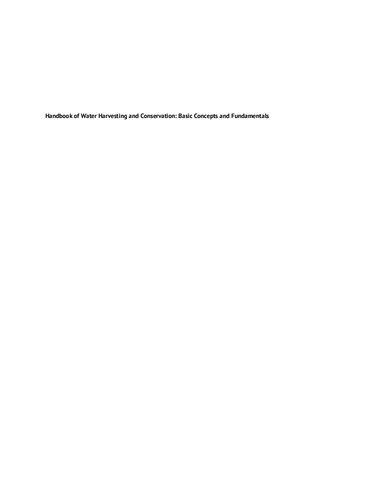

Most ebook files are in PDF format, so you can easily read them using various software such as Foxit Reader or directly on the Google Chrome browser.
Some ebook files are released by publishers in other formats such as .awz, .mobi, .epub, .fb2, etc. You may need to install specific software to read these formats on mobile/PC, such as Calibre.
Please read the tutorial at this link: https://ebookbell.com/faq
We offer FREE conversion to the popular formats you request; however, this may take some time. Therefore, right after payment, please email us, and we will try to provide the service as quickly as possible.
For some exceptional file formats or broken links (if any), please refrain from opening any disputes. Instead, email us first, and we will try to assist within a maximum of 6 hours.
EbookBell Team

5.0
18 reviewsWater harvesting is gaining more and more recognition as a sustainable and resilient water supply options. It is economically viable, socially compatible and environmentally friendly. Water harvesting has proven to be a robust solution to overcome or reduce water shortages all over the world. It is important to understand how to apply this practice in a sustainable and effective way to make full use of its potential in a world increasingly threatened by water scarcity.
The Handbook of Water Harvesting & Conservation: Basic Concepts & Fundamentals is the most comprehensive, up-to-date and applied handbook on water harvesting and conservation yet published. The book’s 30 chapters - written by 84 outstanding international experts from approximately 20 selected countries faced by drought - explore, critique and develop concepts and systems for water harvesting. The editors bring together many perspectives into a synthesis that is both academically based and practical in its potential applications.
This book is an important tool for education, research and technical works in the areas of soil, water and watershed management and is highly useful for drought strategy planning, flood management and developing techniques to adapt to climate change in urban, agricultural, forest and rangeland areas.